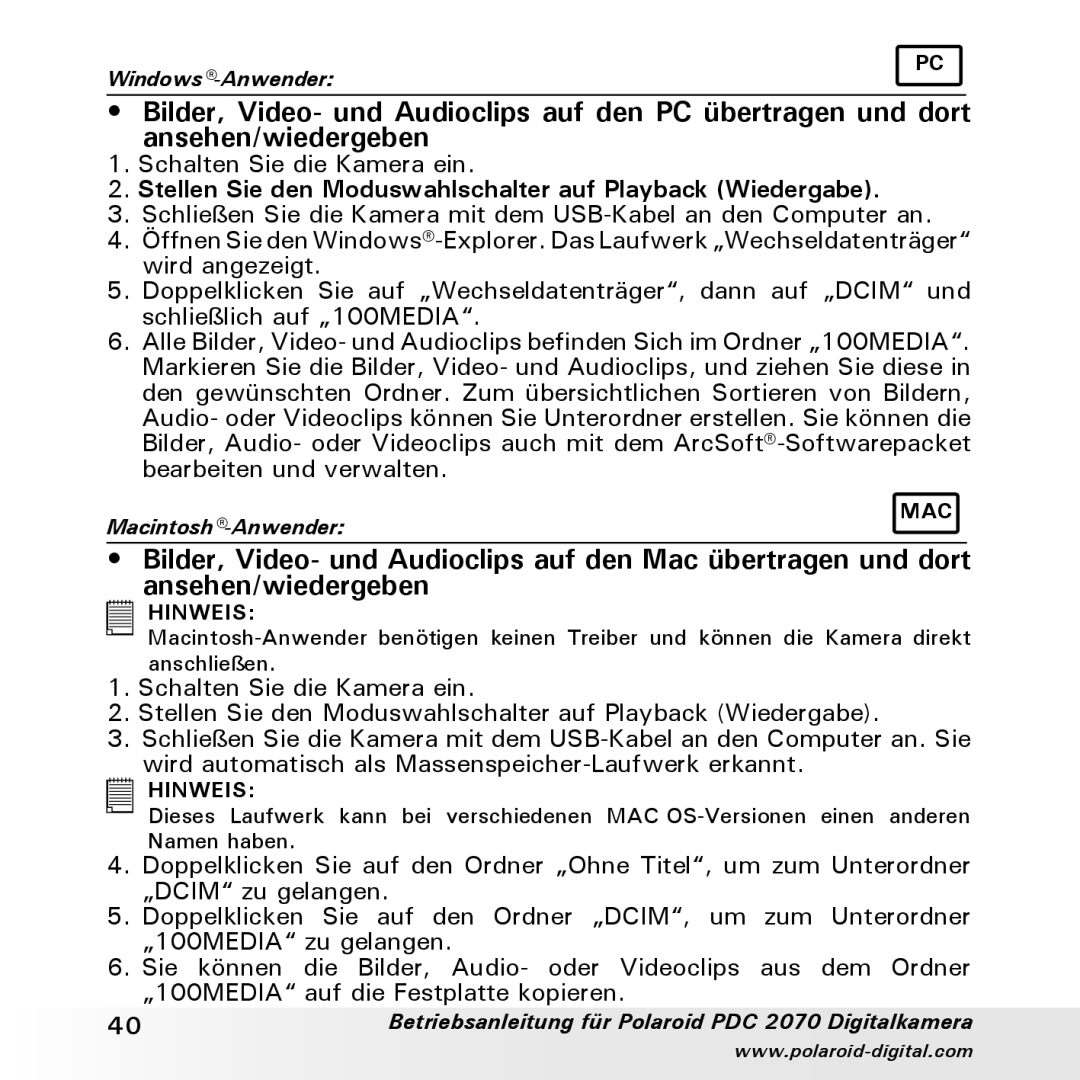PDC 2070 specifications
The Polaroid PDC 2070 was a notable entry into the world of digital photography during its release in the early 2000s. This digital camera, which stood out for its affordability and user-friendly design, aimed to attract both amateur and casual photographers.One of the key features of the PDC 2070 was its 2-megapixel resolution, capable of producing images with a decent level of detail for the time. While this may seem limited compared to today's standards, it was considered impressive for entry-level digital cameras then. The camera was equipped with a 3x optical zoom lens, providing users with the ability to capture subjects from various distances without losing quality.
Another significant characteristic of the PDC 2070 was its compact and ergonomic design. Weighing approximately 5.6 ounces, it was lightweight and portable, allowing users to carry it easily for spontaneous photography sessions. The camera featured a simple interface, complete with a 1.8-inch color LCD screen that provided an instant preview of captured images, enhancing the user experience.
In terms of technology, the Polaroid PDC 2070 utilized the JPEG compression format, which enabled users to store more images on its internal memory or on supported flash memory cards. This flexibility in storage was a considerable advantage for photographers, allowing for extensive shooting without the immediate worry of running out of space.
The camera also had a built-in flash and several shooting modes, including portrait and landscape settings, which made it adaptable to various environments and lighting conditions. The user could easily navigate through these modes, ensuring that capturing the perfect shot was achievable with minimal fuss.
Additionally, the PDC 2070 was compatible with various operating systems, ensuring it could connect easily to computers for image transfer. This feature ultimately facilitated sharing and editing, making it a great tool for budding photographers.
In summary, the Polaroid PDC 2070 combined an accessible price point with user-friendly features, making it a popular choice among novice digital photographers. While it may not offer the advanced technology seen in modern cameras, its blend of simplicity and functionality marked a significant step in the evolution of personal photography.

